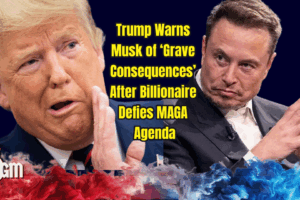Former President Donald Trump’s campaign reported a significant fundraising success for the month of July, announcing a total of $138.7 million in contributions. This marked a substantial increase from June, where his campaign and affiliated groups amassed just under $112 million. The surge in donations came on the heels of the Republican National Convention and a notable attempt on Trump’s life, which likely galvanized support among his base.
Trump’s campaign spokesperson highlighted the momentum gained from these events, emphasizing that the funds raised would bolster their strategy heading into the final stretch of the election season. The substantial financial backing reflects ongoing enthusiasm among Trump supporters, buoyed by key campaign milestones and the candidate’s resilience in the face of challenges.
Trump’s War Chest Reaches $327 Million
With the July fundraising haul, Trump’s war chest now stands at an impressive $327 million, according to the campaign’s latest financial disclosures. This robust financial position not only surpasses his previous fundraising totals but also underscores Trump’s ability to mobilize substantial resources as he gears up for the presidential race.
Comparatively, President Joe Biden’s committees reported having $240 million in cash on hand as of the end of June, signaling a competitive financial landscape as both candidates prepare for the final 96-day sprint to Election Day. The disparity in funding highlights Trump’s formidable fundraising prowess and sets the stage for a fiercely contested campaign period ahead.
Impact of the Assassination Attempt on Fundraising
The assassination attempt against Trump at the Pennsylvania rally was a pivotal moment for the campaign. The incident not only heightened the sense of urgency among supporters but also served as a catalyst for increased financial contributions. Historically, Trump’s fundraising has seen spikes following major events, such as his conviction in late May on felony charges related to a hush-money payment to a porn star before the 2016 election. These incidents appear to galvanize his base, leading to substantial financial support.
The campaign’s financial report for the second quarter revealed that it had raised $331 million, surpassing the $264 million raised by the campaign of then-Democratic candidate and U.S. President Joe Biden during the same period. This financial edge has positioned Trump favorably as he prepares for the final months of the campaign.
Biden’s Withdrawal and Harris’s Rise
On July 21, President Joe Biden ended his re-election bid, endorsing Vice President Kamala Harris as the Democratic Party’s candidate for the November 5 election. Biden’s withdrawal came amid growing concerns about his age and health, especially after a faltering debate performance against Trump in late June. This change in the Democratic ticket has had a profound impact on the campaign dynamics.
Since taking over as the Democratic candidate, Harris has revitalized the campaign. Within the first week of her candidacy, Harris’s campaign reported raising $200 million and enlisting 170,000 new volunteers. This influx of support has reinvigorated a campaign that was previously struggling with doubts about Biden’s viability as a candidate. Polls indicate that the race has become more competitive, with Harris’s entry narrowing the gap that Trump had built over Biden, especially in key battleground states.
Campaign Funds and Strategies Moving Forward
The Trump campaign has reported having $327 million in cash on hand as of August, a robust war chest as the election approaches. This financial strength is expected to support extensive campaign activities, including advertising, rallies, and voter outreach programs. Trump’s announcement of Ohio Senator JD Vance as his running mate at the Republican National Convention in Milwaukee is also likely to energize his base and attract additional support.
Conversely, Harris’s campaign has yet to disclose its July fundraising totals or the current state of its campaign funds. Nonetheless, the vice president’s entry into the race has already sparked a wave of new donations and volunteers, suggesting a strong financial position. Harris has ramped up her travel schedule and launched a series of advertisements highlighting her personal story and criticizing Trump’s policies, aiming to consolidate her support base and appeal to undecided voters.
Implications for the November Election
The dynamic between the two campaigns is evolving rapidly, with both candidates adjusting their strategies to maximize voter engagement. Harris’s significant fundraising in her campaign’s initial week has bolstered Democratic confidence, especially following Biden’s lackluster debate performance in late June. The upcoming Democratic National Convention in Chicago, set to begin on August 19, will formalize Harris as the party’s nominee and likely boost her campaign further as she announces her running mate.
The attempted assassination of Trump during a rally in Pennsylvania on July 13 has also played a role in galvanizing his supporters. The incident, combined with his selection of Vance as a running mate, has injected new energy into Trump’s campaign. As the election draws closer, both campaigns are expected to intensify their efforts, leveraging their respective fundraising successes to sway voters and secure a victory in November.














